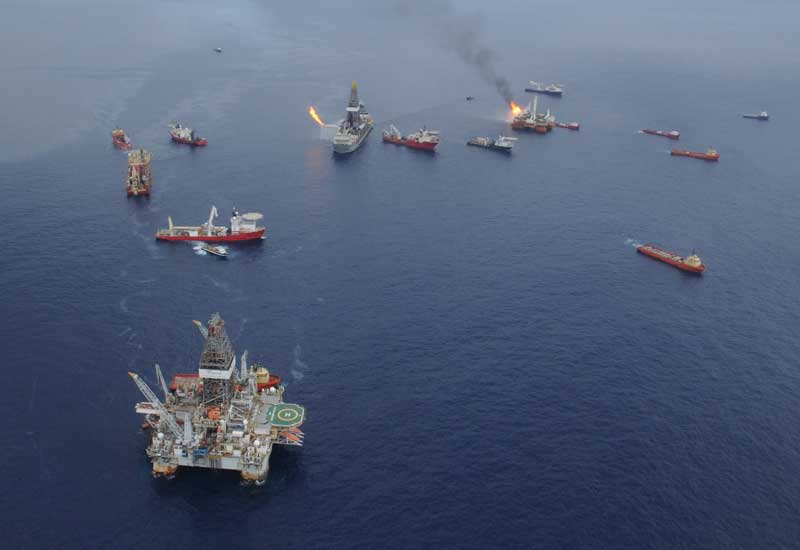BP has today provided an update on developments in the response to the MC252 oil well incident in the Gulf of Mexico.
The company statement says subsea efforts continue to focus on progressing options to stop the flow of oil from the well through interventions via the blow out preventer (BOP), and to collect the flow of oil from the leak points. These efforts are being carried out in conjunction with industry experts and governmental authorities.
A series of diagnostic tests are currently underway on the Deepwater Horizon’s failed BOP to improve understanding of the status and configuration of the BOP and determine whether a ‘top kill’ procedure can be successfully executed. These tests involve pumping drilling fluids into the BOP to measure pressures and validate flow paths. When complete, a decision will be made on the execution of the top kill procedure itself.
This top kill procedure has not been carried out offshore at 5,000 feet water depth before, and its success cannot be assured. It is expected that the entire procedure could take up to two days, and it cannot be predicted how long it will take for the operation to prove successful or otherwise. Should it be necessary, plans and equipment are in place to combine the top kill process with the injection under pressure of bridging material into the BOP to prevent or limit upward flow through the BOP.
BP will continue to provide a live video feed from the seabed through the diagnostic testing and top kill, if undertaken. Throughout the diagnostic process and top kill procedure very significant changes in the appearance of the flows at the seabed will be expected. These will not provide a reliable indicator of the overall progress, or success or failure, of the top kill operation as a whole.
Should the top kill not succeed in fully stopping the flow of oil and gas from the well, BP would then intend to move forward to deployment of the LMRP cap containment system.
Deployment of this system will involve first removing the damaged riser from the top of the BOP to leave a cleanly-cut pipe at the top of the BOP’s lower marine riser package (LMRP). The LMRP cap, an engineered containment device with a sealing grommet, would then be connected to a riser from the Discoverer Enterprise drillship and then placed over the existing LMRP with the intention of capturing most of the oil and gas flowing from the well.
The LMRP cap is already on site and it is anticipated that this option will be available for deployment by the end of May.
Additional options also continue to be progressed, including the option of lowering a second blow-out preventer, or a valve, on top of the failed Deepwater Horizon BOP.
Work on the drilling of two relief wells, begun on May 2 and May 16, continues. Each of the wells is estimated to take some three months to complete from the commencement of drilling.



